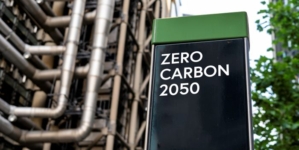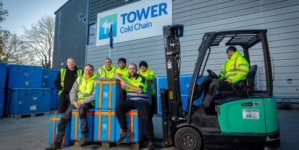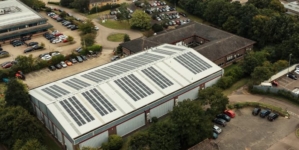-
Nutrivend selects Forterro’s Orderwise to support online expansion and streamline operations - April 11, 2025
-
ARROWXL LAUNCHES AMBITIOUS ZERO WASTE ROADMAP - April 8, 2025
-
THE BCMPA’S NEW CAMPAIGN DRIVES OUTSOURCING SUCCESS IN Q1 - April 7, 2025
-
BLACKOUT TECHNOLOGIES TARGETS TELEMATICS-INTEGRATED MOBILE DEVICE BLOCKING TO COMBAT SMARTPHONE DISTRACTION - April 1, 2025
-
Sparck Technologies awarded Royal designation - March 27, 2025
-
OpenADR Alliance announces first OpenADR 3.0 certified products with EVoke Systems, E.ON Energy and Universal Devices - March 25, 2025
-
Growing fulfilment and contract packer appoints new Managing Director - March 25, 2025
-
When is it time to invest in a WMS? Understanding the key trigger points - March 25, 2025
-
eCapital helps Vantage Recruitment on its journey to financial success - March 24, 2025
-
Hugo Beck Celebrates 70 Years of Packaging Innovation with Open House Events - March 20, 2025
A Siemens Christmas Carol – Bah humbug!
While it’s the most wonderful time of the year as businesses wind down and families get together for the Yuletide celebrations, the excesses of the festive season can have a devastating effect on the environment. Energy costs can go through the roof as we use more to keep us warm and fed; resulting in heftier bills and making for a less than Merry Christmas. With the pressures of being more environmentally responsible can UK businesses really have an eco-friendly Christmas without being Scrooges?
Christmas Past and Present
Replace lighting with something smarter
In the office, it generally makes sense to update lighting systems given 46% of an organisation’s operating costs are spent on energy and utilities, with 25 % of the electricity bill for lighting.
Smart lights – LEDs with integrated IoT sensors – have been a real advancement. They can adjust to individual lighting preferences or allow groups of lights to behave in concert with varying levels of brightness, monitor room occupancy and turn off if everyone has left the room, balance artificial light and daylight to give consistent illumination and co-ordinate lighting across defined areas. WiFi and Bluetooth connectivity makes them adaptable to future applications and data collection needs.
Smart light applications also extend to space planning, asset tracking, conference room management and hotdesking. Developers that have opened up their APIs allow for easier integration with other third-party systems and applications including location services and spatial analysis.
Better regulation of lighting means businesses can benefit from better control over their energy management and more efficient use of space, based on data collected about room usage.
Steve Loughney of Siemens Smart Infrastructure says: “Not only are you replacing older lights for newer more efficient ones and reducing your bills but you’re also putting lighting (energy) control at your fingertips – future proofing any investments to create an environment that cares. Smarter lights have added health benefits too; staff will have better levels of concentration and motivation plus lower levels of stress.”
Keep warm without costing the earth
Keeping offices warm and ventilated, particularly in ageing draughtier buildings, throughout the winter months can be costly with significant amounts of money wasted. Building Energy Management Systems [BEMS] offer businesses the ability to manage a more stable indoor climate while reducing costs and carbon emissions. BEMs feature a demand-side response operation that can turn heating, cooling or humidity controls up or down as needed while letting predictive analytics bring energy sources back online depending upon the conditions.
Loughney, Siemens Smart Infrastructure adds: “Maintaining a comfortable work environment doesn’t always mean having to change the thermostat, or opening and closing windows. BEMS help businesses to understand how their environment is performing and allows managers to control and adjust systems to optimise performance and comfort plus they aren’t just for larger or more complex buildings, or multiple sites with a number of buildings as simpler pared-down versions have been developed for smaller needs.”
Over the holiday period, Loughney notes: “Many offices could be vacated with businesses left to leave buildings ‘on’ to maintain a level of warmth and security. There is a fine balance between not wasting energy and protecting a building and some form of environment automation could alleviate issues such as frozen pipes.”
Christmas Future
Understand what you are using then make changes
With the government legally bound to reduce CO2 emissions to net zero by 2050 UK businesses have a responsibility to help reach some of that ambition. The first and most important step is to understand how much energy is being used. An audit of current energy usage details how a business can reduce its total energy consumption so it can lower costs and improve its carbon footprint.
Capturing the right data and its correct application is driving digitalisation. Analysis of information from the past reveals how well buildings and equipment have been performing making decisions smarter when identifying or optimising big energy users, adopting energy procurement strategies or building business cases for on-site power generation.
ESOS, applicable to large businesses (over 250 employees or turnover of more than €250 million), was introduced to help organisations identify measures that could help them become more energy efficient and to promote sustainability. Energy-saving measures could include driving down energy consumption to reduce costs and environmental impact, creating a more sustainable energy mix or storing and generating energy on site to reduce the reliance on the grid and procuring energy at the best price. The Phase 2 deadline passed on 5th December 2019 and ESOS 3 commences shortly after Christmas.
Building operators that want to phase in more expensive improvements with financial support can turn to Energy Performance Contracting (EPC) – a financing instrument that can fund and fast track large scale energy improvement projects. EPC absorbs the upfront capital costs of any energy-saving measures against the expected energy-consumption savings.
On financing energy-saving projects, Mark McLoughlin, Siemens Industries and Markets , Siemens Financial Services (UK) adds “Expert financiers are able to offer customised finance packages, tailored to fit a business’ particular circumstances and cash flow needs, which intelligently spread the cost over an agreed financing period, and flex to ensure that monthly finance payments align with expected benefits gained over time. This removes the need for a large initial outlay, thereby increasing the funds available for other expenditures.”
Loughney of Siemens Smart Infrastructure continues: “With a raft of measures readily available businesses can use energy more efficiently to improve their environmental credentials. We all have a responsibility to learn from the past and lessen our environmental impact so the future yet to come remains sustainable. Actions, no matter how small, make a difference and you certainly won’t have to be a Scrooge to be eco-friendly this Christmas or at any other time.”
For further information on Siemens Intelligent Infrastructure, please see https://new.siemens.com/uk/en/company/topic-areas/intelligent-infrastructure.html
































